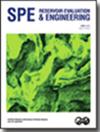使用图卷积网络自适应校正井间连通性和门控循环单元进行性能预测的深度学习框架
IF 1.5
4区 工程技术
Q3 ENERGY & FUELS
引用次数: 5
摘要
油田开发动态预测是油田开发中一个重要而复杂的问题。合理预测油田开发动态可以指导开发方案的调整。此外,由于流动的水,油藏在开发过程中变化缓慢,然而,以前预测生产动态的网络忽略了这一点,导致预测不准确。常规的注入和生产测量包含了重要的地下结构和性质。为此,针对油水两相水淹油藏动态预测,建立了基于图卷积网络(GCN)和门控循环单元(GRU)的自适应校正井间连通性深度学习框架。该模型包括两个部分:第一部分是基于GCN的自适应校正模型,利用动态生产数据对渗透率、孔隙度、井间距离等计算得到的初始井间连通性进行自动校正。第二部分是基于GRU的自适应学习模型,根据油井生产动态数据的时间特征对油井生产动态进行预测。该框架考虑了油藏条件随时间变化对产量的影响,以解决生产动态预测不准确的问题。它还可以预测井间连通性。对于井数较多的油田,利用嵌入思想将相似的井归为一类,节省了训练时间,避免了过拟合问题。将该模型应用于5个不同的油藏,以预测井间连通性、油井产油量和井含水,并将结果与人工神经网络(ANN)、GRU和长短期记忆(LSTM)模型进行比较,并与数值模拟软件tNavigator®(Rock Flow Dynamics Llc)进行比较。将该模型应用于渤海A油藏B区块,“自适应图卷积网络与GRU”(AG-GRU)模型的平均绝对百分比误差为2.1150%,LSTM模型的平均绝对百分比误差为9.8872%。误差减少了78.6%。注入水具有从注水井到生产井的方向;本文只考虑井间连通性,未考虑方向。需要进一步研究考虑注水方向,形成加权有向图。本文章由计算机程序翻译,如有差异,请以英文原文为准。
A Deep Learning Framework Using Graph Convolutional Networks for Adaptive Correction of Interwell Connectivity and Gated Recurrent Unit for Performance Prediction
Oilfield development performance prediction is a significant and complex problem in oilfield development. Reasonable prediction of oilfield development performance can guide the adjustment of the development plan. Moreover, the reservoir will change slowly during reservoir development because of flowing water however, previous networks that forecast production dynamics ignored it, which leads to inaccurate predictions. Routine well-wise injection and production measurements contain important subsurface structure and properties. So, for the dynamic prediction of oil/water two-phase waterflooded reservoirs, we built a deep learning framework named adaptive correction interwell connectivity model based on graph convolutional networks (GCN) and gated recurrent unit (GRU). It includes two parts: The first part is the adaptive correction model based on GCN, which uses dynamic production data to automatically correct the initial interwell connectivity computed by permeability, porosity, interwell distance, and so on. The second part is the adaptive learning model based on GRU, which predicts the production performance of oil wells according to the time characteristics of production performance data. This framework considers the influence that changes in reservoir conditions have on production over time to solve the problem of inaccurate production dynamic prediction. It can also predict interwell connectivity. For oilfields with too many wells, using the embedding idea classifies similar wells into one category, saving time for training and avoiding overfitting problems. Applying the model to five different reservoirs to predict interwell connectivity, well oil production rate, and well water cut compare the results with artificial neural networks (ANN), GRU, and long short-term memory (LSTM) models and compare the interwell connectivity with numerical simulation software ,tNavigator® (Rock Flow Dynamics Llc), too. When the model is applied in Block B of Bohai A reservoir, the mean absolute percentage error of “Adaptive Graph convolutional network and GRU” (AG-GRU) is 2.1150% while the LSTM is 9.8872%. The error reduces by 78.6%. The injected water has a direction from the water injection well to the production well; this paper only considers the interwell connectivity without considering the direction. Further research is needed to consider the water injection direction and form a weighted directed graph.
求助全文
通过发布文献求助,成功后即可免费获取论文全文。
去求助
来源期刊
CiteScore
5.30
自引率
0.00%
发文量
68
审稿时长
12 months
期刊介绍:
Covers the application of a wide range of topics, including reservoir characterization, geology and geophysics, core analysis, well logging, well testing, reservoir management, enhanced oil recovery, fluid mechanics, performance prediction, reservoir simulation, digital energy, uncertainty/risk assessment, information management, resource and reserve evaluation, portfolio/asset management, project valuation, and petroleum economics.

 求助内容:
求助内容: 应助结果提醒方式:
应助结果提醒方式:


